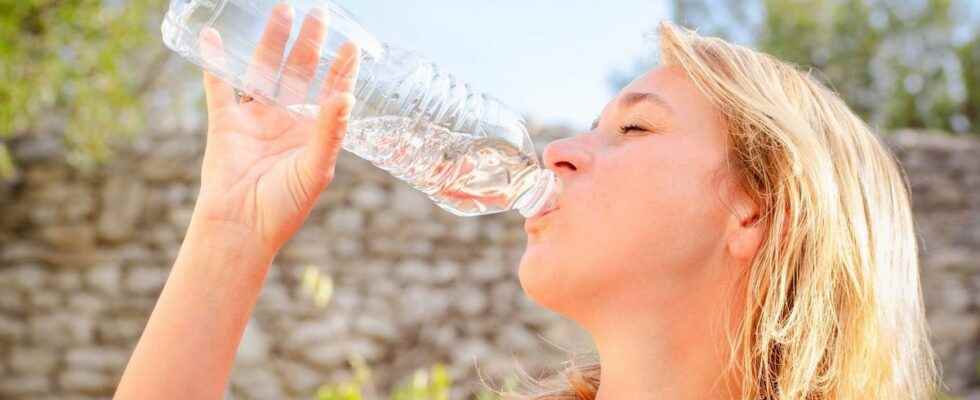Published on
Updated
Reading 2 mins.
With this heat, you are tempted to refill your plastic water bottle. A gesture to avoid, according to Dr. Laurent Chevallier, nutritionist.
At the beach, in a park or in the forest, it is tempting, even obvious, to reuse your water bottle. An ecological habit, but which proves to be harmful to health according to various studies.
With heat, chemical compounds degrade in water
It’s an established fact: bottled water contains thousands of microplastics. However, in periods of high heat, the process of molecular exchanges is increased tenfold. The chemicals in the plastic bottle mix more quickly with the liquid: this is called chemical leaching.
To demonstrate the effect of heat on PET water bottles (the plastic most commonly used to make disposable water bottles), a Chinese study stored bottles for four weeks at temperatures up to 158 degrees Fahrenheit (74 degrees).
As a result, levels of the chemicals BPA and antimony, a carcinogen comparable to arsenic, had gradually increased.
A risk shared by Olivier Vitrac, researcher at the National Institute of Agronomic Research on the interactions between packaging and foodstuffs, who confided in the magazine 60 million consumers.
“Raising the temperature of PET by 10°C is equivalent to multiplying by three the contact time between plastic and water”.
Moreover, once the bottle is opened, the quality of the water will only deteriorate.
Three times more germs than a dog’s bowl
Another concern: over time, bacteria multiply in the bottle. Indeed, by uncorking it and resealing it, the germs multiply at great speed. The same applies to the contact of the mouth with the neck.
And here, there is no need for strong heat: even a drink left at room temperature can self-infect.
“If you don’t clean your bottle thoroughly, bacteria grow quite easily”confirms Dr. Chevallier.
In order to alert the public to these risks, the Treadmillreviews brand carried out a micro study on twelve reused bottles.
Results ? Bottles with caps had three times more germs than a dog’s bowl. Those with a sliding opening contained 20 times more bacteria than the same bowl.
“To hydrate without risk, the best option is to drink tap water stored in a stainless steel or glass bottle”concludes the nutritionist, because “bottled waters are not spared from contaminants”.
The expert also advises against the use of the filter jug - or water purifier – which could contain silver nanoparticles, which are potentially dangerous. These would indeed promote the mortality of aquatic and terrestrial organisms, while inhibiting their growth and reproduction.

